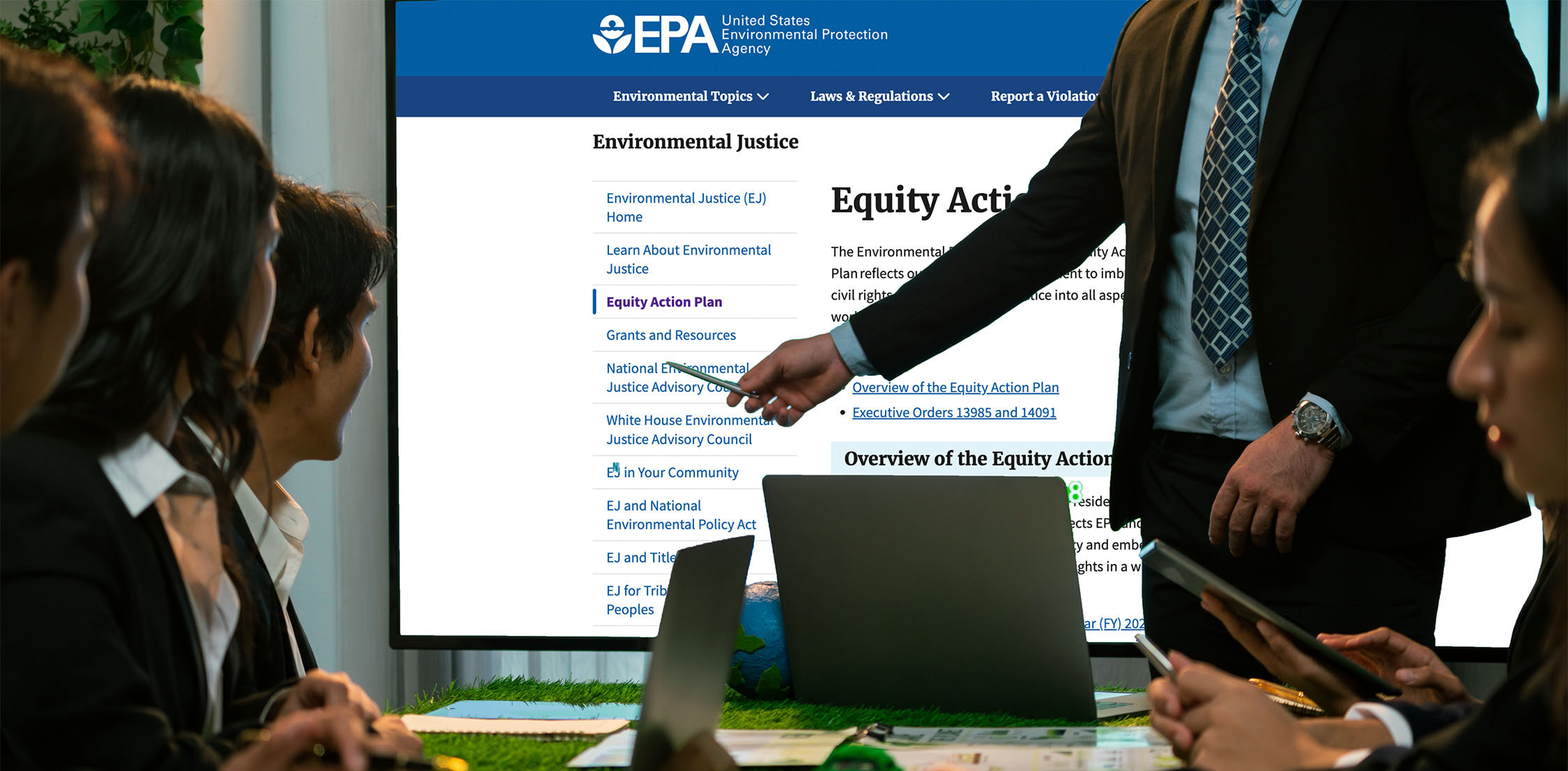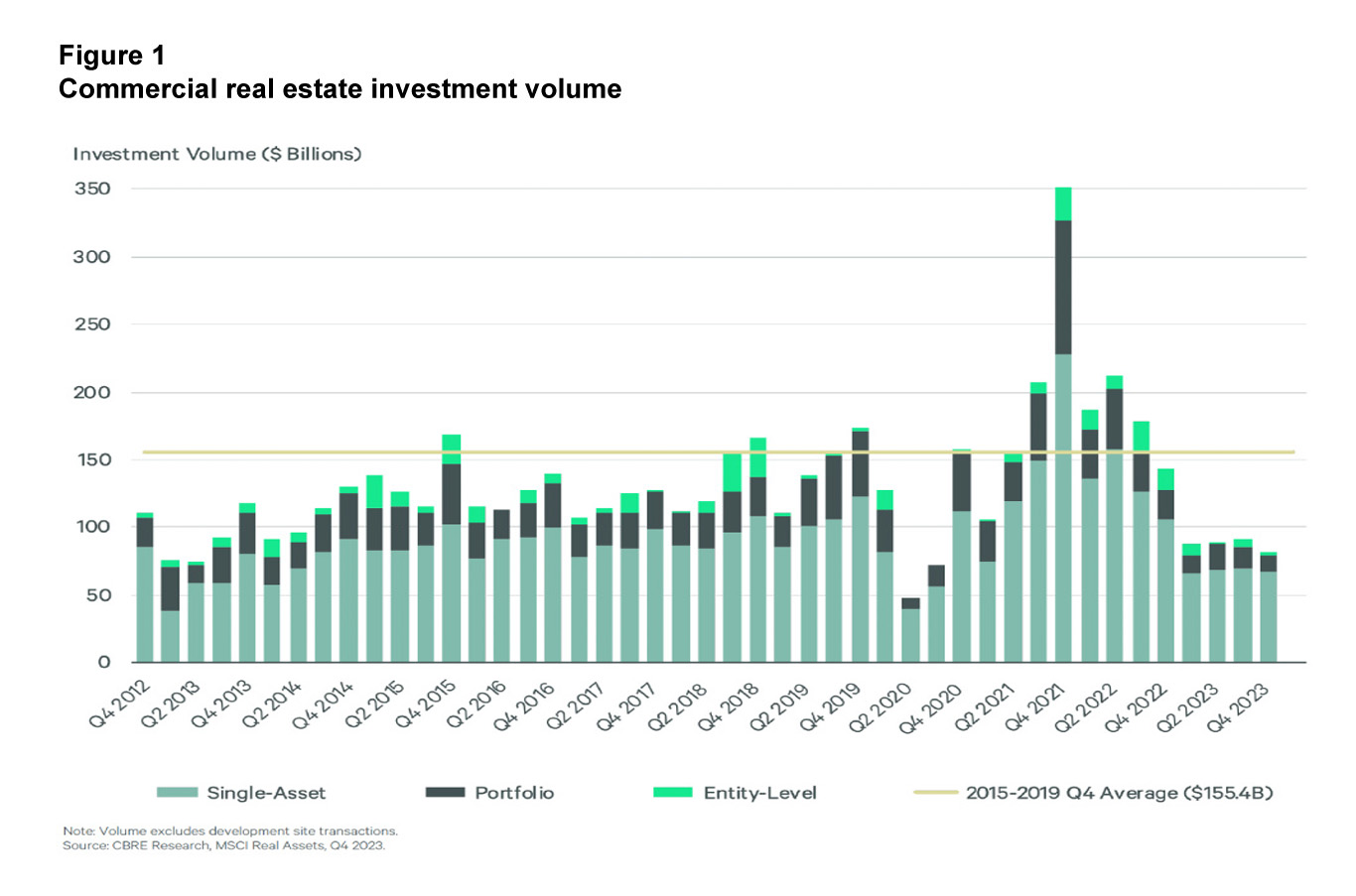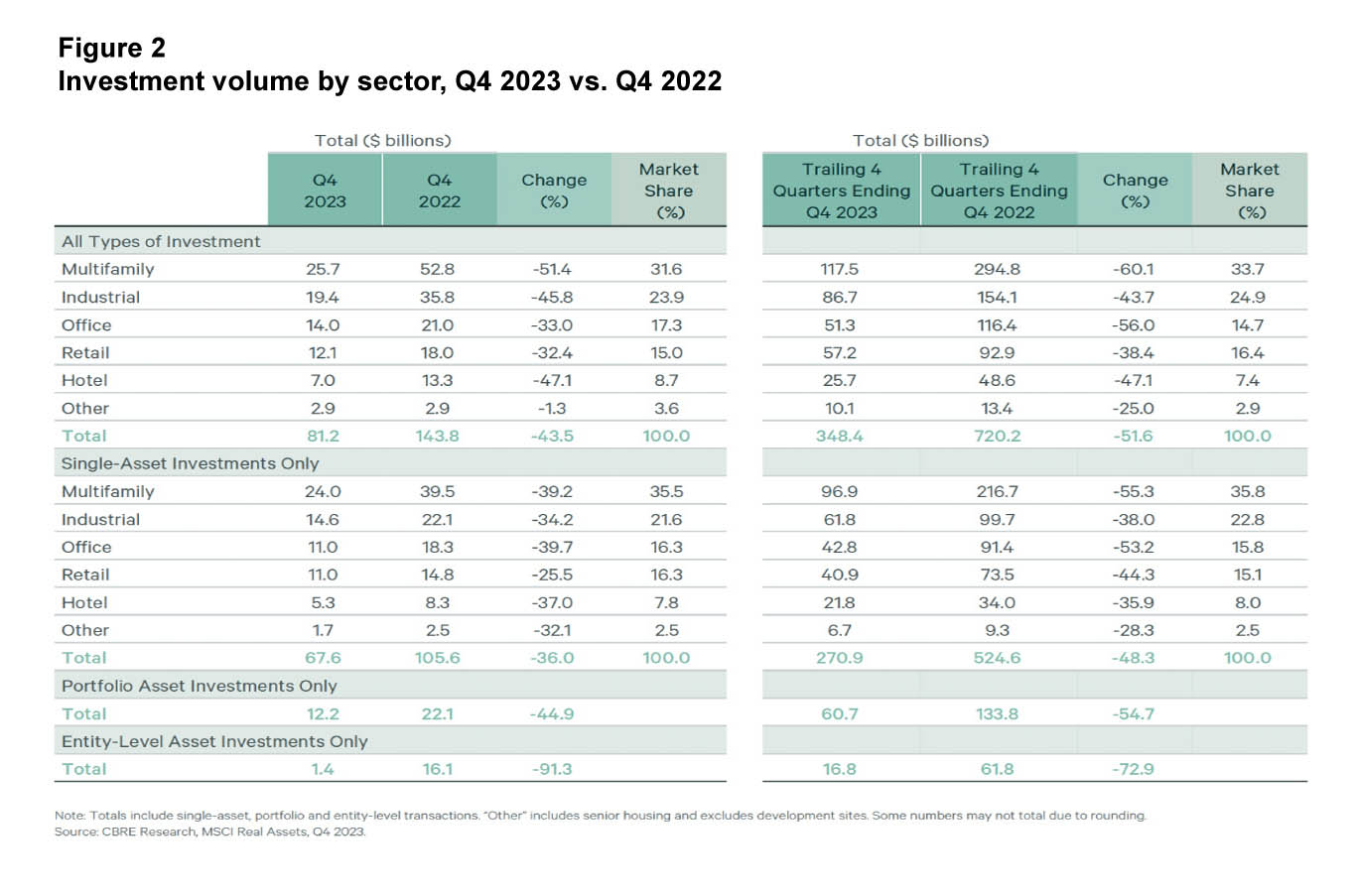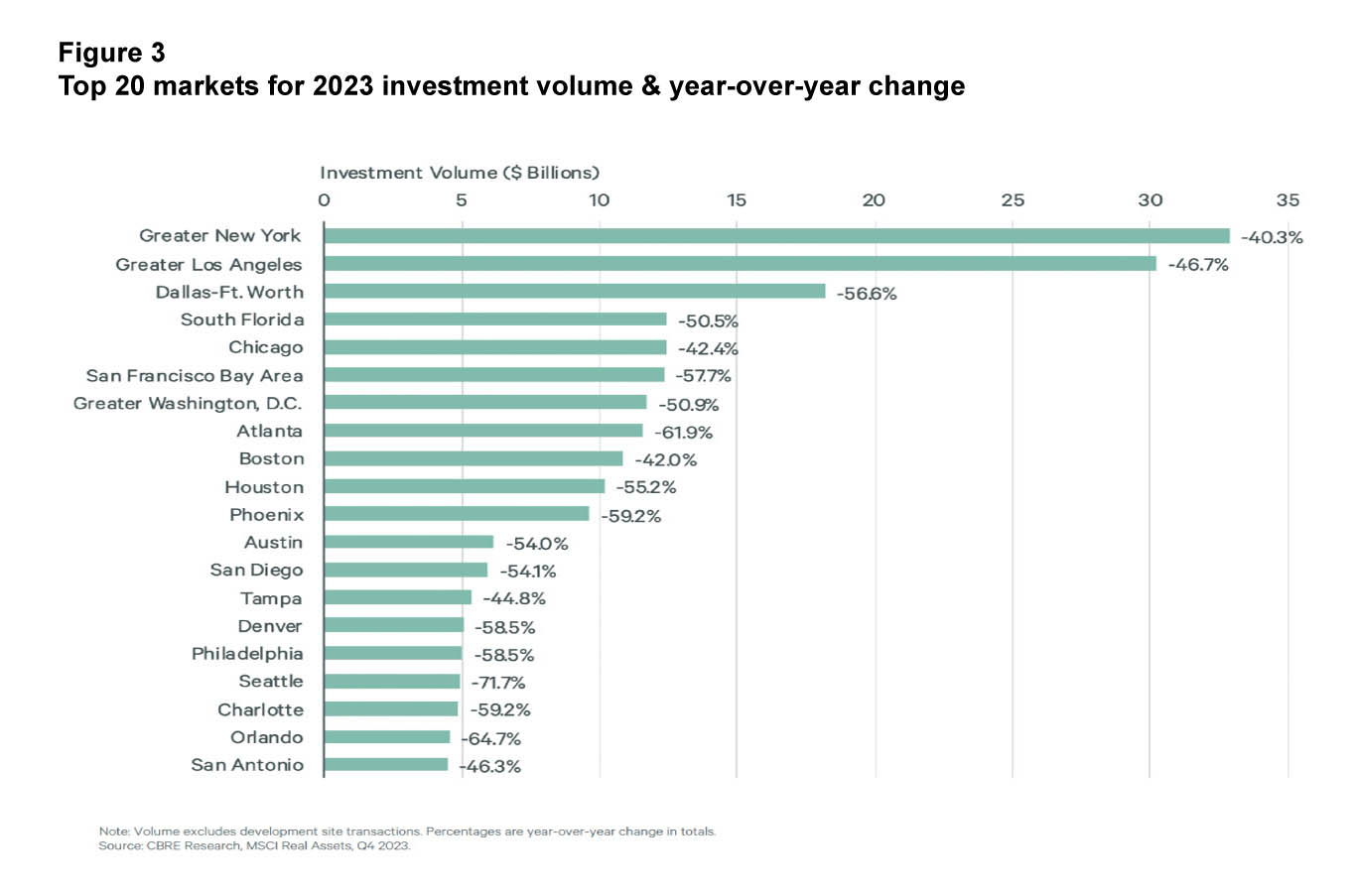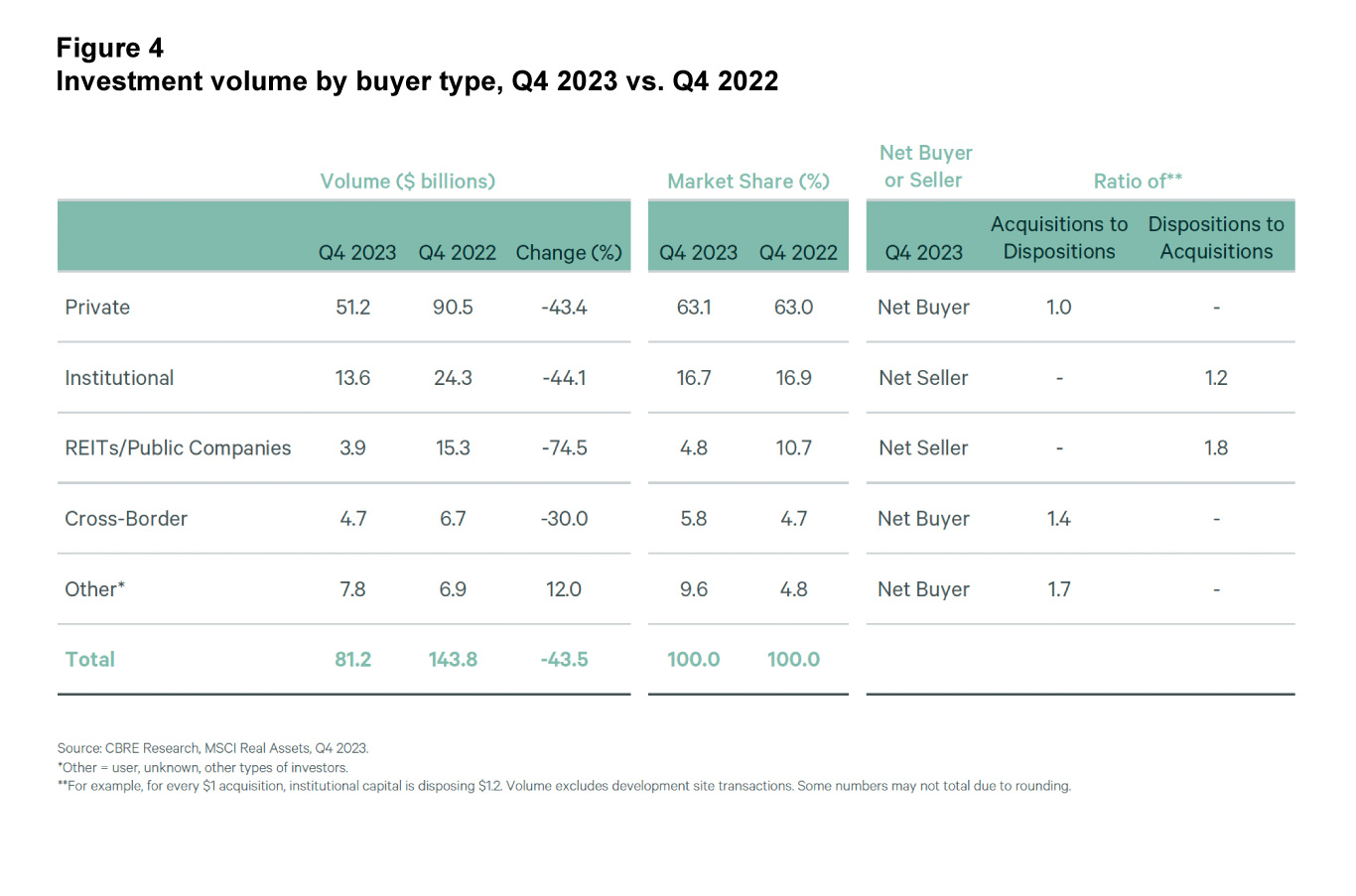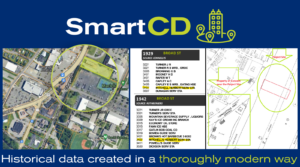IN FOCUS
Environmental justice has been a major priority for the Biden administration. During his first week in office, Biden issued an executive order establishing the Justice40 Initiative, which mandates that 40% of the benefits of certain agency programs go to environmental justice (EJ) communities. In addition to earmarking billions of dollars for EJ communities, the executive branch has implemented an ambitious enforcement and regulatory agenda focused on tackling what it considers “environmental injustice.”
"The National Enforcement Compliance Initiatives specifically state that 'promoting environmental justice is a core element of all enforcement and compliance work."
The Environmental Protection Agency (EPA), for the first time, incorporated EJ considerations into its most recent National Enforcement Compliance Initiatives (NECIs), which are priority areas where EPA intends to focus its enforcement and compliance resources. The NECIs for fiscal years 2024-2027 specifically state that “promoting environmental justice … is a core element of all enforcement and compliance work.”
In EPA’s 2023 update to its Equity Action Plan, the agency identified key priority strategies that embed EJ into its programs and policies. The plan highlights EPA’s EJ enforcement and compliance accomplishments, including increased inspections at facilities affecting EJ communities, an assessment of the agency’s legal authority to address cumulative impacts, and the launch of the new Office of Environmental Justice and External Civil Rights.
However, EPA has also faced recent challenges in enforcing its EJ policies. For example, in May 2023, Louisiana sued EPA, arguing that the agency can’t investigate air permits issued to chemical and plastics manufacturers in heavily industrialized, Black-majority communities under the Civil Rights Act. In January 2024, a federal judge granted Louisiana’s preliminary injunction request, concluding that federal law does not authorize EPA’s disparate impact regulations. The ruling could have significant ramifications for the Biden administration’s EJ enforcement initiatives.
State Environmental Justice Policies
States also are increasingly prioritizing EJ, establishing task forces and commissions focused on concerns in overburdened communities and enacting laws and regulations to address EJ issues. Notably, New Jersey mandates an evaluation of the environmental and public health impacts of certain facilities and requires an EJ impact statement for new facilities in overburdened communities. New Jersey’s landmark regulations are the first of their kind, and they are already having significant implications for businesses and environmental consultants nationwide. Other examples of EJ-specific laws among the states include those in Massachusetts, New York, and California, emphasizing the siting of facilities and pollution reduction in disproportionately impacted communities.
Tools and Strategies for Consultants
It’s important for consultants with clients working in EJ communities to be aware of the issues impacting these neighborhoods. Mapping tools like EJScreen, the
Climate and Economic Justice Screening Tool, California’s CalEnviroScreen, and those in other states can help consultants identify facilities or projects in overburdened areas.
"Determining whether a facility is located in an EJ community is critical for compliance."
For many industries, EJ has become another compliance checkpoint. While industry is increasingly working toward understanding and meeting EJ requirements, the path to compliance can be complex, explained Stephanie Deery, Vice President and Director of Air Quality Services at environmental and sustainability consulting firm Aeterra, LLC. Because each state – and sometimes even local jurisdictions – has different, or even unspecified regulations, it can be difficult for companies to understand their obligations. Determining whether a facility is located in an EJ community is critical for compliance and aids in the diligence process for identifying sites that may be under increased scrutiny.
There may also be budget considerations for projects or facilities located in EJ communities, said Alan Rogney, environmental due diligence professional and Managing Director and Founder at Aeterra. He said permit renewals can materially affect a deal, noting that facilities bear the cost of compliance tools like increased air quality control devices. Knowing if a facility is in an EJ area is essential to understanding regulatory requirements, related costs, and overall community impact.
"Community support is needed to keep development projects on budget and on time, especially in EJ communities."
Understanding Community Impact
Additionally, community support is needed to keep development projects on budget and on time, especially in EJ communities, said Kendall Parrish, Environmental Justice Program Manager at Impact Environmental, an environmental consulting and services firm. While it can be difficult to get the community on the side of new development, Parrish said knowing how to present data and gain the public’s trust is key. She noted how Impact Environmental adheres to a community participation plan and goes above and beyond in its community presentations for the former DuPont facility project in East Chicago, Indiana. Even though community engagement is a legal requirement in places like New Jersey, Parrish said it’s a best practice to operate this way across the board.
Best practices in this area include adopting systematic approaches, maintaining accurate air emissions data, sustaining compliance management systems, and understanding broader impacts to the community and the environment overall, Deery said. “We try to take a holistic approach, especially on the diligence side,” Rogney added, explaining that all of these considerations are rolled up into the ESG umbrella, a focus area for Aeterra.
An ERIS Originals article diving into more detail is forthcoming.
CRE MARKET UPDATE
The Latest Market Updates in the U.S. Commercial Real Estate Industry
CRE Investment Volume Continued to Fall in Q4
In Q4, U.S. commercial real estate (CRE) saw a substantial 44% year-over-year decrease in investment volume, totaling $81 billion, as reported by CBRE Research. The annual volume plunged by 52% to $348 billion, the lowest since 2012. Notably, entity-level investment volume nosedived by 91% to $14.4 billion in Q4, largely attributed to escalated financing costs. Meanwhile, single-asset sales experienced a 36% decline, reaching $68 billion, while portfolio sales dropped by 45% to $12 billion (see Figure 1).
Multifamily remained the best-performing sector, boasting $26 billion in transaction volume, closely followed by industrial and logistics with $19 billion. Office investment volume dwindled by 33% in Q4 to $14 billion, whereas retail experienced a 32% decrease, settling at $12 billion (see Figure 2).
New York led all markets for annual investment volume, securing $33 billion, followed by Los Angeles with $30 billion, and Dallas-Ft. Worth with $18 billion. Among the top 20 markets, New York exhibited the least year-over-year decrease at 40%, with none experiencing an increase (see Figure 3).
Private investors dominated Q4 investment volume, accounting for 63% of the total, amounting to $51 billion, although this was a decrease of 43% compared to the previous year. Private and cross-border investors remained net buyers, while institutional and REIT investors turned net sellers. REITs/public companies witnessed the most significant year-over-year drop in Q4 investment volume (-75%), followed by institutional investors with a 44% decline. Inbound cross-border investment volume fell by 30% year-over-year in Q4, totaling $4.7 billion. However, on a quarter-over-quarter basis, inbound cross-border volume surged by 36% (see Figure 4).
To view larger images and dive deeper into the data, click on the images above.
Latest Developments
Legal Challenges Persist after EPA Revises WOTUS Rule in the Wake of Sackett

On August 29, 2023, EPA issued a final rulemaking amending the “waters of the United States” (WOTUS) rule to comply with the Supreme Court’s recent decision in Sackett v. EPA. However, the question of when a body of water is subject to federal regulation under the Clean Water Act (CWA) remains uncertain, with industry groups and 26 states challenging both the content of the revised rule and EPA’s rulemaking procedure.
The court’s decision in Sackett rejected the broad geographical reach of the “significant nexus test,” ruling that EPA only has jurisdiction over wetlands that have a continuous surface connection with a navigable body of water. That means the federal government can only regulate wetlands if it is “difficult to determine where” a lake, river, or other “relatively permanent” body of water ends “and the wetland begins.”
EPA said a public notice-and-comment period wasn’t necessary, and the revised rule became effective September 8, 2023. The rule removes all references to the significant nexus test and requires a continuous surface connection between a jurisdictional water and wetland, limiting jurisdiction to relatively permanent bodies of water. However, legal experts argue that the rule doesn’t fully reflect the full scope of Sackett. For example, it does not clearly explain what a “relatively permanent” body of water is.
Several lawsuits are pending against EPA over the revised WOTUS rule. The states and industry groups pursuing legal action argue that EPA’s failure to clearly define “relatively permanent” and “continuous surface connections” undermines Sackett. Importantly, they also say that EPA’s decision not to provide a notice-and-comment period violates the Administrative Procedure Act. Environmental professionals should be aware that the outcomes of these legal challenges will have significant implications for the jurisdictional reach of the CWA and state sovereignty over land and water management.
Additionally, on March 22, the U.S. Army Corps of Engineers released a memorandum titled “Civil Works Actions to Sustain and Advance the Nation’s Waters and Wetlands After the Sackett Decision,” which directs the Corps to engage in “specific actions to protect, restore, and enhance our Nation's waters and wetlands that are now more vulnerable" after Sackett. Specifically, the memo discusses how the Corps can use other statutory and regulatory tools to protect wetlands despite the limits imposed by Sackett. Legal experts say that “the announcement will likely only continue the long-standing tug-of-war on the jurisdictional limits and meaning of the 'waters of the United States.'"
You can listen to the ERIS podcast about the U.S. Supreme Court ruling in Sackett here.
SEC Adopts Final Climate Risk Disclosure Rules; Issues Stay in Light of Legal Challenges
After multiple delays, the SEC adopted its highly anticipated climate risk disclosure rules on March 6. While the final rules are less stringent than originally proposed, they still require public companies to provide extensive climate-related information in their registration statements and annual reports. Specifically, the final rules require disclosure of material climate-related risks and how those risks impact business strategy and outlook, oversight and management of those risks, climate-related targets and goals that have materially affected or are reasonably likely to materially affect the business, material GHG emissions data, and financial impacts.
Notably, the final rules do not require Scope 3 disclosures (emissions from upstream and downstream indirect sources) and now only require Scope 1 (emissions from fuel burned in owned or controlled assets) and Scope 2 (from purchased electricity, steam, heat, and cooling in buildings and production processes) disclosures from large accelerated filers and certain accelerated filers if the emissions are material. Here is a redline comparing the final version to the initial proposal.
Originally, the final rules would have become effective May 28, 60 days after publication in the Federal Register, and would have phased in the requirements according to the size of the registrant and the type of disclosure beginning in fiscal 2025 (filed in 2026). However, because the agency is now facing nine petitions challenging the rules, the SEC announced April 4 that it will halt implementation pending judicial resolution.
Legal Challenges
The Eighth Circuit Court of Appeals was selected in a lottery as the venue for hearing a case consolidating the nine lawsuits related to the SEC’s authority to enact the rules. This comes after the Fifth Circuit Court of Appeals issued an administrative stay temporarily blocking the rules, pending a challenge from two oilfield service companies. That stay was lifted once jurisdiction shifted to the Eighth Circuit. The petition for review in this case argues that the rules violate the major questions doctrine – a judicial principle that states courts presume Congress doesn’t delegate issues of major political or economic significance to federal agencies – and the First Amendment.
Other lawsuits filed against the SEC include one brought by the U.S. Chamber of Commerce. The Chamber is also challenging two new California laws requiring companies to disclose climate-related financial risks and greenhouse gas emissions beginning in 2026. (For an overview of the California laws, see California Enacts Major Climate Risk Disclosure Laws).
The SEC maintains that it is “within the Commission’s long-standing authority to require the disclosure of information important to investors in making investment and voting decisions.” However, the agency doesn’t want the litigants to become subject to the rules while the legal challenges are pending. Staying the rule “will facilitate the orderly judicial resolution of those challenges and allow the court of appeals to focus on deciding the merits.”
State Developments
Phase I and Liability Changes for Maine Hazardous Substance Sites
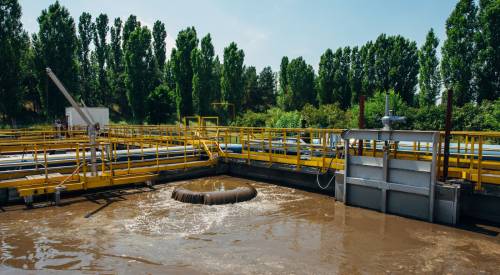
Maine’s newly enacted amendments to its liability law for uncontrolled hazardous substance sites (LD 2066) introduce new All Appropriate Inquiries (AAI) standards and provide limited exemption for certain parties related to perfluoroalkyl and polyfluoroalkyl substances (PFAS) contamination. The changes expand on the methods allowed to owners of contaminated property when claiming protection from CERCLA liability by applying federal AAI rules to acquisitions after October 31, 2006. The amendments also limit third-party liability for certain PFAS contamination, including entities licensed by the Department of Environmental Protection for land applications of sludge or sludge-derived products. This amendment is also noteworthy in light of LD 1911, enacted in 2022, which prohibits beneficial uses (including land applications) of any biosolids that are not PFAS-free. LD 2066 goes into effect 90 days following the adjournment of the 2024 legislature, currently slated for April 17, 2024.
Release Reform for Delaware’s Bulk Storage Program

The Department of Natural Resources and Environmental Control (DNREC) of Delaware made sweeping changes to the rules governing aboveground storage tanks (AST) and underground storage tanks (UST). The most significant are wholly new versions, incorporated by reference, of guidance documents for the regulated community in the event of a leak, referred to as a “Release.” The new version of the preeminent guide, Delaware Risk-Based Corrective Action Protocol (DERPCAP) Volume 2, now contains de facto regulations, including newly established standards for identifying and remediating AST releases. DNREC also added Tier 0 sampling requirements, thoroughly revised concentration limits, and new resources for risk-based screening level calculations. Other substantive amendments within the regulations redefine AST and UST. Namely, an AST holding a regulated substance must not have contained any other regulated substance, and each UST compartment is now considered an individual UST (previously, a compartmentalized tank was one tank). DNREC also moved some release-related provisions to DERPCAP and consolidated and recodified many sections, including those related to repair requirements, changes in service, changes in substance stored, and closure-in-place. The amendments became effective on January 11, 2024.
Alabama Expands Voluntary Cleanup Program to Encourage More Participation from Responsible Parties

The Alabama Department of Environmental Management (ADEM) has adopted amendments to the Alabama Administrative Code – Voluntary Cleanup Program (VCP) regulations at Title 335, Division 15. The changes align the regulations with recent legislation intended to encourage more participation in the VCP program, thereby returning more brownfields to productive use. The VCP encourages applicants to voluntarily assess, remediate, and reuse contaminated properties by providing protection from future liability for cleanup and post-remediation costs when a site is remediated in accordance with program requirements. The amendments provide additional liability protections to responsible parties that elect to participate in the VCP program. These protections previously applied only to non-responsible parties. The amendments also establish a Brownfield Remediation Reserve Fund that is available for properties remediated by responsible parties under the VCP program to cover future post-remediation expenses.
Link: Environmental Management, Alabama Department of – Amend Chapter 335-15-4 Certification (state.al.us)
Content provided by STP ComplianceEHS.
LENDERS' CORNER
The Impact of the SEC’s Final Climate Risk Disclosure Rule on Financial Institutions
On March 6th the SEC adopted their rule to standardize climate-related disclosures. ERIS recently discussed the rule, and its impact for financial institutions, with Marty Walters of Recovery Risk, LLC on the Risk-E Business Podcast.
As Walters pointed out, “I think the biggest thing to keep in mind with this new rule is that the SEC is now requiring large public companies to disclose in their audited financial statements what their physical risks are from climate change. And that's a big change because when you include a disclosure in your audited financials, it must be of a high level of quality.”
While many companies have already been reporting on emissions, only about 10% of financial institutions are currently doing so. “There are 2,300 large accelerated filers in the U.S. right now that are public companies,” according to Walters. “These are [companies with] over $100 million in revenues every year. Under the final rules they're supposed to start including this in their 2025 filings,” Walters said.
Regarding banks specifically, there are 280 in the U.S. with over $10 billion in assets. “I would say most of those [banks] are going to have to file,” Walters explained. “Some of them are already having to do a fair amount of risk management. Just last year, the federal banking regulators issued a new rule to the very, very large banks … that have over $100 billion in assets."
“These large banks must start managing all their climate risks and then now they'll have to also start disclosing some of that as well – a category of about 180 banks, they're familiar with the whole dynamic. And then there's a smaller group of about 100 banks that are more regional banking organizations. That category are the banks that are going to have to do a fair amount of catching up to make sure that they're ready to do this kind of disclosure because they're not yet subject to the climate risk management rule that the federal banking regulators issued.”
Complying with the New Rule’s Requirements
Pulling material climate risk into a bank's policy and risk framework is a challenging task, with many questions that need to be answered during the process. However, Walters explains, there are solutions. ”I would always recommend working with your environmental risk team or asset quality team within the bank and look at ways to build in some mitigants for how to make properties more resilient. It doesn't have to be very expensive. We've learned that over time, you collect the information you need, figure out what’s on the menu of risk mitigants, and what you can do to reduce risk.” Walters noted that this is all doable, but that it takes a fair amount of data. “We've got to be good data managers.”
While the SEC has stayed the rule until the litigation is resolved, we do know for certain that the rule will have broad implications for financial institutions moving forward. For an up-to-date status of the rule, read the article in this issue under LATEST DEVELOPMENTS above.
The entire podcast can be heard here: www.erisinfo.com/podcasts.
ASTM DEVELOPMENTS
Updated Site Assessment Standard for Forestland or Rural Property
 ASTM International's Committee E50 recently updated its Standard Practice for Environmental Site Assessments: Phase I Environmental Site Assessment Process for Forestland or Rural Property (E2247-23). The standard, which falls under Subcommittee E50.02, outlines best practices and protocols for evaluating the environmental conditions of rural property or forestland.
ASTM International's Committee E50 recently updated its Standard Practice for Environmental Site Assessments: Phase I Environmental Site Assessment Process for Forestland or Rural Property (E2247-23). The standard, which falls under Subcommittee E50.02, outlines best practices and protocols for evaluating the environmental conditions of rural property or forestland.
The standard is intended to constitute all appropriate inquiries (AAI) for landowner liability protections, but it can be used for other applications as well. EPA is currently reviewing the revised standard for compliance with all its AAI regulations, which is expected to be complete by the end of the year.
“This revision clarifies the appropriate level of effort in researching the histories of a subject property and its adjoining properties and provides clearer definitions and the underlying logic in identifying both historical recognized environmental conditions (HRECs) and recognized environmental conditions (RECs) for a subject property,” said E50.02 task group lead Matthew Lesh in a recent ASTM Standardization News article.
Updates to the Standard Guide for Sustainable Brownfields Redevelopment Underway
 In April 2023, ASTM E50 members voted to update the ASTM E1984-03 Standard Guide for Process of Sustainable Brownfields Redevelopment under the E50.07 Climate and Community subcommittee. The original standard was sunset and withdrawn several years ago, requiring an update to reflect the current industry consensus.
In April 2023, ASTM E50 members voted to update the ASTM E1984-03 Standard Guide for Process of Sustainable Brownfields Redevelopment under the E50.07 Climate and Community subcommittee. The original standard was sunset and withdrawn several years ago, requiring an update to reflect the current industry consensus.
Since the creation of ASTM E1984-03, significant changes and opportunities have been created by federal, state, tribal, and local governments to incentivize and guide brownfields redevelopment. “With unprecedented funding directed at brownfields redevelopment, environmental justice, climate action, and economic development, there is an urgent need for updated tools to guide stakeholders and build the capacity of communities to take advantage of brownfields redevelopment opportunities,” according to work group chair Danielle Getsinger. The guide aims to outline the process for redevelopment and key considerations to position projects for sustainable, long-term success, accounting for economic, social, and environmental factors.
For more information about this guide or to participate in the update through ASTM Work Group WK87108, please contact Danielle Getsinger at [email protected] or Molly Lynyak at [email protected].
Progress Update on the New Property Resilience Assessment Guide
 ASTM continues to push forward on its new Guide for Property Resilience Assessment (WK62996), which aims to provide a clear framework and outline best practices for assessing natural hazards, including those made more extreme by climate change. According to task group chair Holly Neber, the PRA Guide is in the balloting process; the second ballot closed in January. The task group is currently navigating the next steps related to two negatives that were received. “We anticipate working through these negatives over the next couple of months and achieving our goal of publication soon. We are following the ASTM process and trust in this process to deliver a great outcome,” Neber said.
ASTM continues to push forward on its new Guide for Property Resilience Assessment (WK62996), which aims to provide a clear framework and outline best practices for assessing natural hazards, including those made more extreme by climate change. According to task group chair Holly Neber, the PRA Guide is in the balloting process; the second ballot closed in January. The task group is currently navigating the next steps related to two negatives that were received. “We anticipate working through these negatives over the next couple of months and achieving our goal of publication soon. We are following the ASTM process and trust in this process to deliver a great outcome,” Neber said.
According to Neber, the group is already seeing the PRA Guide and PRA process used in many scenarios. “Task Group members are sharing knowledge about the PRA services they are providing, and we're seeing these types of assessments gain prominence in response to the rising costs of property insurance … In addition, we're hearing of lending institutions that have incorporated elements of the PRA into their due diligence scopes of work to evaluate the physical risks during the loan approval process.”
Neber pointed out that lenders and investors are also exploring climate risk modeling solutions to evaluate their portfolios, explaining that a portion of the PRA Guide provides important considerations for this analysis. “So, while we're still working through the balloting process, the PRA process is appearing in current commercial real estate investment due diligence and decision-making, which is great to see. Kudos to the PRA Task Group.”
ERIS’ ASTM-Compliant SmartCD Streamlines City Directory Searches
City Directories (CDs) have long been an invaluable resource for environmental professionals (EPs), offering insights into the historical use of properties and their occupants. ERIS SmartCD updates this aspect of environmental research by streamlining the process of accessing and analyzing city directory data, specifically designed to comply with ASTM’s E1527-21 Standard for Phase I Environmental Site Assessments. This innovative approach simplifies the identification of Phase I subject properties and adjacent commercial properties by eliminating the need for the user to determine which properties to include in a CD search. The experienced CD experts at ERIS handle the process for you, leveraging their knowledge of historical and regional nuances to provide an ASTM-compliant, streamlined search that ensures relevant results with the necessary addresses. SmartCD saves EPs time and effort. Furthermore, SmartCD enhances the depth of analysis by including image outputs that provide valuable context, such as cross streets and annotations. Doing so assures a more accurate and thorough understanding of current and historical occupant information, which is vital for a comprehensive environmental assessment.
Visit our website or connect directly with your Regional Account Manager to get started.
Spotlight On
Special Profile: Melissa Perkins-Nelson, Regional Account Manager, Mountain West
Melissa joined ERIS in 2022 as the Solutions Account Manager when Scriva, ERIS’ report-authoring platform, launched. She brings over 20 years of successful sales experience across international and domestic territories in diverse markets, including environmental lab services; hazardous waste solutions; animal health (pharmaceuticals, biologicals, diagnostics solutions); and software (financial, hospitality, business solutions, international sourcing, and logistics). Melissa’s initiatives to develop strong business relationships and establish internal workflow processes provided ERIS’ sales and Scriva teams a solid base with customers, and the momentum to boost Scriva toward ongoing and future success. As of April 1, 2024, Melissa represents ERIS as a Regional Account Manager in the Mountain West territory, serving existing clients and developing new business. She continues to focus on clients, listening to their needs, building relationships, and learning how she can partner with them to provide the solutions they need to accomplish their goals and be successful. Melissa will focus on growing market share by providing the highest level of customer service to ERIS clients while delivering the most comprehensive, up-to-date, and accurate environmental risk data and digital solutions. She is a results-driven, strategic thinker who is resilient, high-energy, and immensely positive.
Born and raised in Boulder, Colorado, Melissa has a passion for being outside, hiking, skiing, snowshoeing, fly fishing, snowmobiling, archery, falconry, and reading a book in a sunbeam. Past passions include playing polo, which she still loves to watch. When not with her family, including her Chesapeake Bay Retriever, cats, pet pig Pedro, and horses, or working on her small ranch in Colorado, you can find her at Pilates or in riding lessons to compete in dressage, jumping, and eventing. Melissa promotes suicide awareness/prevention and melanoma awareness/prevention and loves to travel.
To learn more about Melissa Perkins-Nelson, click here.
Upcoming Events

April 24, Online: ERIS’ Dave Colonna speaks with John H. Wright from BBG at the EBA Risk Management Meeting.
May 1, Arvada, CO: Melissa Perkins-Nelson will attend the Colorado Brownfields Conference.
May 2, Dallas, TX: Join Scott Davis at the EBA Meet-Up.
May 2, Tacoma, WA: Join Maggie Losoya at the Northwest Remediation Conference (NEBC).
May 14-15, Austin, TX: Join the ERIS Team at the Environmental Trade Fair and Conference (TCEQ).
May 15-17, Chattanooga, TN: Join Jeanie Bunt at the Tennessee Environmental Network Show of the South.
June 24-26, Boston, MA: Carol Le Noury will attend the Environment Analyst Sustainability Delivery Summit.
July 16-19, San Marco, FL: Join Jeanie Bunt at the Environmental Permitting Summer School.


